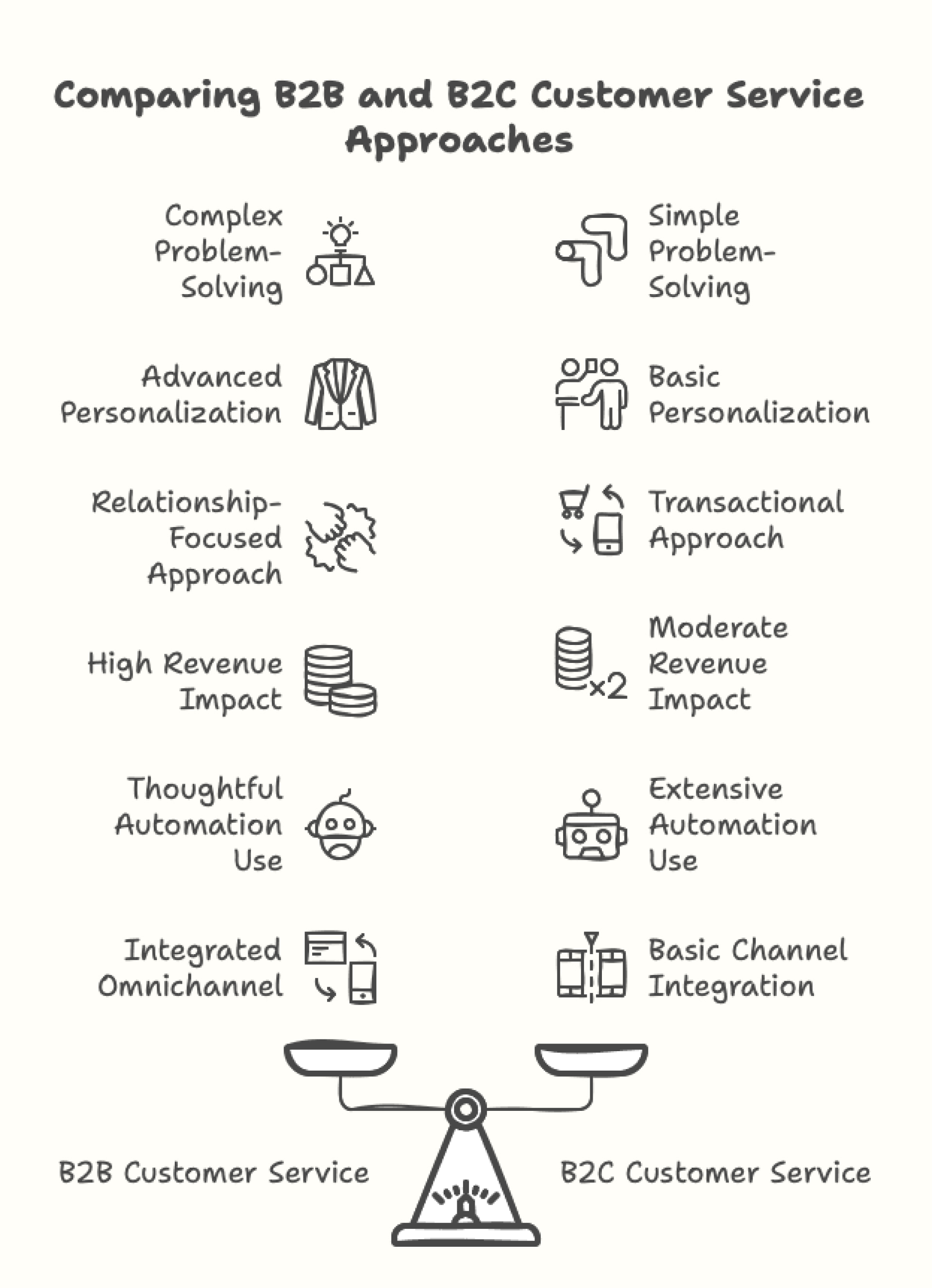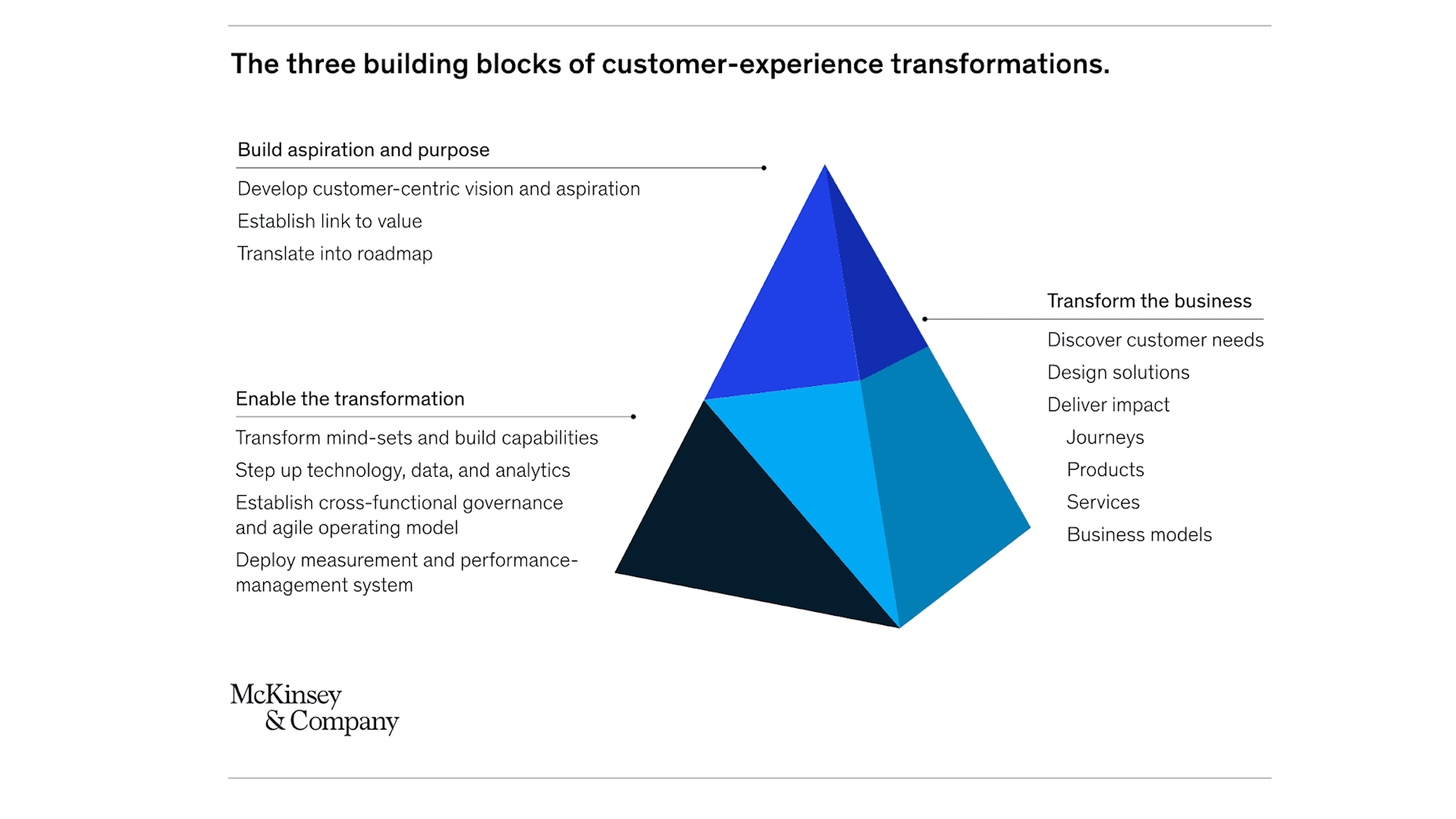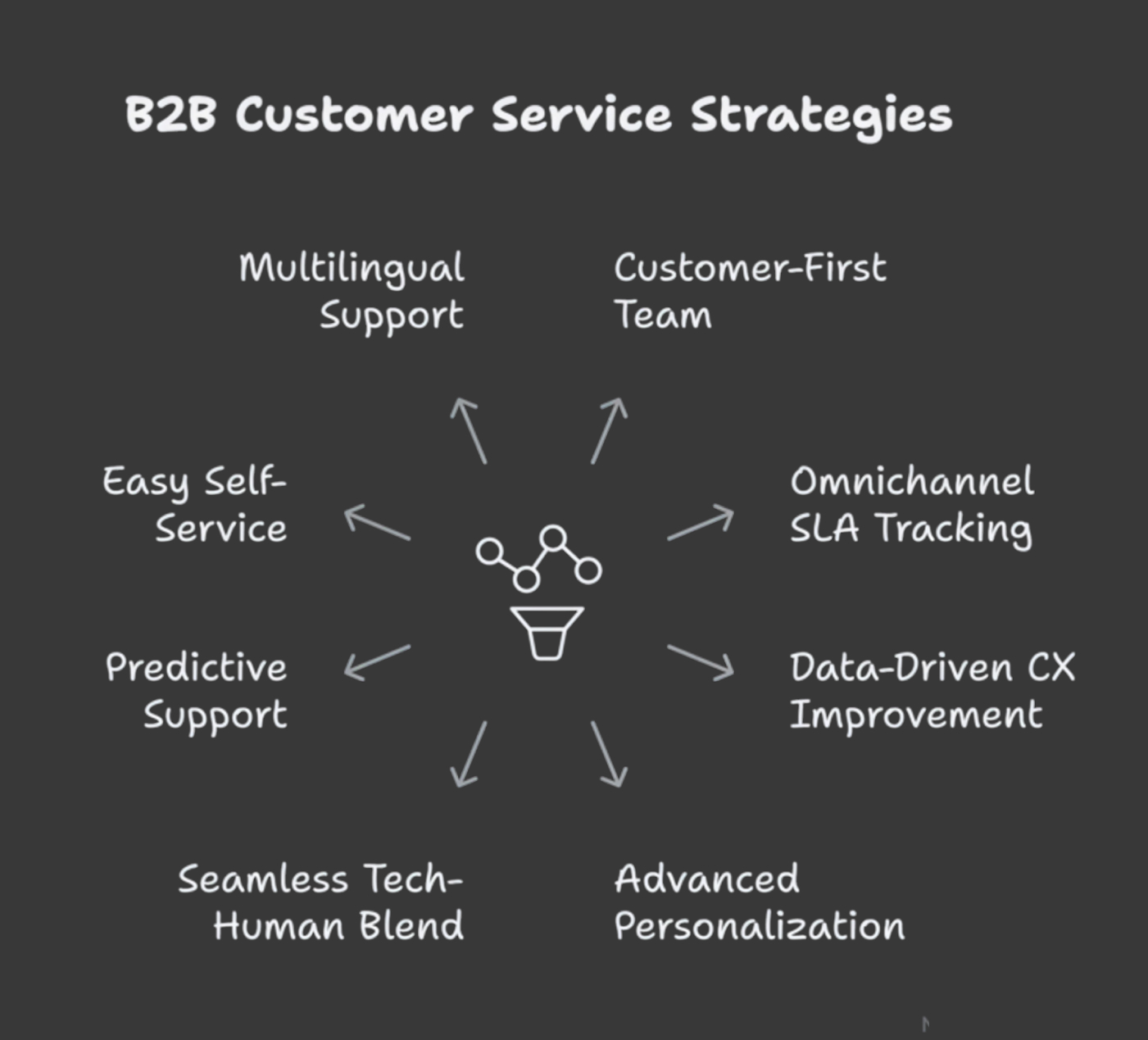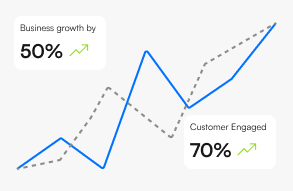Why B2B Customer Service Needs a New Architecture in 2026

Kasturi Goswami
July 14, 2025
7 min

Table of Contents
What is B2B customer service in 2026?
B2B customer service has always been about providing active service, i.e., solving problems or closing tickets. In 2026, this basic definition is no longer valid. Now, it is about developing a deep sense of understanding about personalization and forecasting issues. B2B customer service is proactivity to meet client satisfaction from all ends.
Why it matters:
- Builds long-term business relationships
- Improves customer retention and loyalty
- Drives operational efficiency and revenue growth
Platforms like Thinkstack help B2B companies transition from fragmented, reactive service to connected and properly orchestrated customer journeys.
Customer Relationships are Business Success Assets

The stakes are higher now:
- Customer-centric companies are 60% more profitable than companies that don’t focus on customers.
- 65% of CX practitioners consider that product experience comes post customer experience in organizations.
- 88% of customers are likely to be in a continued client-provider relationship with providers when the service is “memorable”.
This means achieving excellence in customer service is more than a brand quality tag. It is customer retention at its best.
But then the next thing that would come to mind is: Is customer service the same whether it is for a B2B or B2C audience?
How Does Customer Service Differ for B2B than B2C
Many businesses still approach B2B customer service through a B2C lens. But B2B service has unique challenges that can’t be overlooked. The B2B journey involves multiple buyers, decision-makers, and users, making them complex.
What I’ve seen is that an effortless collaboration between them is possible and necessary rather than being optional for representatives.
In my experience, when support handoffs are clumsy, the damage to trust happens fast.
Here’s what stands out as the basic differences between B2B and B2C customer service approaches:

How to Assess the Quality of Your Business’s B2B Customer Service
While working with B2B brands, I’ve seen one simple truth: what you measure, you can improve. Every B2B business should regularly assess its customer service process using both qualitative and quantitative approaches.
Firstly, nothing beats direct conversations with customers. Regular feedback mechanisms like surveys, 1:1 calls, or open feedback loops give customers the space to share their honest views. These feedback sessions often reveal unexpected patterns, blind spots, or friction points that no dashboard can.
In addition to this, there is one very underrated channel that businesses need to explore more, WhatsApp. Whatsapp AI forms are an excellent way to implement feedback collection at a more personal level through this channel.
Secondly, keeping track of key customer service metrics, such as response time, resolution rate, and customer satisfaction (CSAT), provides a data-driven pulse on how your service performs.
I recommend setting clear benchmarks based on your industry or growth goals. Over time, these benchmarks help you spot whether your service is improving, stagnating, or slipping and whether it’s time to pivot your CX strategy.
The Three Building Blocks of CX Transformation
McKinsey & Company outlines three key elements that drive effective customer experience automations. CX strategists will completely agree with this model:
- Firstly, B2B brands need to create a customer-first vision with proper CX initiatives in place and turn that vision into an actionable roadmap.
- Secondly, the company should enable this transformation through a solid yet executable plan with steps included for performance measurement.
- Finally, transform the business slowly by identifying evolving customer needs and driving results across customer journeys.
This 3-point framework serves as a guidepost for all B2B companies.

Top 8 B2B Customer Service Strategies
1. Build a customer-first team with smart tools
B2B service always starts with people. Your team needs tech skills, but also empathy. Automation should assist, not replace. Tools must help teams work together, assign tasks, and solve issues faster. That way, your team spends more time building strong relationships.
2. Make omnichannel and proactive SLA tracking a must
But great teamwork alone isn’t enough. Your customers expect flexibility too. B2B buyers jump between email, chat, phone, and other channels. McKinsey says over half of buyers now demand seamless journeys across all touchpoints. CX tools must make this easier by spotting SLA risks early and escalating issues before they break trust.
3. Use feedback and data together to improve CX
Once you’re supporting customers across channels, it’s time to listen closely. Collecting feedback is good, but acting on it is what creates impact. I’ve seen how blending customer surveys with live CX data leads to better results. Tools must help track satisfaction scores, flag churn risks, and uncover hidden issues, helping you fine-tune your service.
4. Go beyond basic personalization
Listening helps, but responding in a personal way makes all the difference. B2B clients expect you to remember their contracts, past requests, and business goals. Any B2B customer service solution must make this easy by showing relevant details about every interaction so that you can make changes and customers always feel understood.
5. Blend tech and humans seamlessly
Here’s something I’ve learned: the best tech isn’t loud. It works quietly, letting humans shine in the moments that matter most. CX tools must weave bots, agents, and self-service tools into one smooth system. Agents can focus fully on solving problems, while automation handles the background work.
6. Offer support that predicts, not just reacts
Now, imagine going one step further and solving problems before they even appear. That’s where proactive service comes in. Customer service must incorporate the use of predictive tools to spot repeat issues, suggest solutions, and catch risks before they grow. This is how good service turns into great service.
7. Let customers help themselves, easily
And sometimes, the best service is letting customers take the lead. Many B2B clients prefer solving issues on their own, without raising tickets. Self-service tools allow them to do exactly that. Now, whether it’s troubleshooting, following how-to guides, or managing complex tasks, there are no issues involved.
8. Serve global customers in their language
Of course, none of this works if customers can’t understand the help you provide. Serving clients worldwide means speaking their language. Multilingual support makes this seamless, allowing every customer to get clear, helpful service in their native tongue. This builds loyalty, no matter where they are.

Thinkstack’s B2B CX approach that stands out
The Thinkstack platform creates an outstanding connection between automation, AI, and human expertise. This unified answer is built to reduce friction and speed up issue resolution. Thinkstack helps companies to anticipate customer needs and respond at scale. With deep personalization, proactive SLA monitoring, and agentic workflows, Thinkstack ensures that every customer journey is smooth and one.
Also read: The four pillar of customer experience automation
B2B Customer Service Is More Than Ticket Resolution
Today, B2B customer service is about creating systems that learn, predict, and evolve with every customer touchpoint. Platforms like Thinkstack AI agent builder make this shift possible by combining the best of automation and human intervention. If you’re ready to move from reactive service to proactive growth, now is the time to rethink your customer service strategy, and Thinkstack is ready to help.
- Agentic workflows allow every customer inquiry to be routed, handled, and completed with full awareness of its context and priority. They’re the difference between fragmented support and seamless customer journeys.
— Basudev Saha, Co-founder and CTO, Thinkstack
Scale your support, engage customers and convert 24/7
Build AI agent for freeFrequently Asked Questions (FAQs)

Grow Your Business with AI Agents
- Automate tasks
- Engage customers 24/7
- Boost conversions